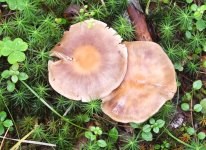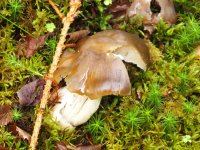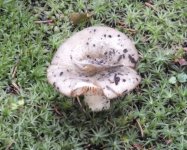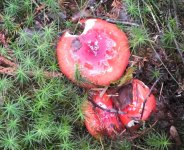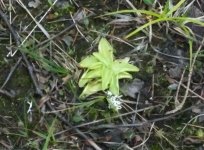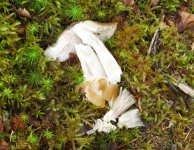Hi Delia,
Sorry, I should have explained better!
Some fungi are only capable of existing when certain trees are present, their 'roots' (=hyphae) literally penetrating the tree roots, forming a relationship called a 'mycorrhiza', where they share and swap certain nutrients.
Sometimes this relationship is quite exclusive - For example you will only ever find Russula carpini under Hornbeam trees.
Sometimes though, the fungus is a little more 'promiscuous' and likes a broader range of trees - For example Russula nobilis likes several broadleaf trees in Fagaceae (Beech family)
...So quite often by identifying the trees in the area one can get a good idea of which mycorrhizal fungi might be present.
Yes, I originally thought number 2 could belong to the Russula foetans group (though I remain unconvinced) - That group usually has very strong odours, sometimes of crab, honey or chlorine. The specimen is unfortunately quite tatty hence my reluctance to commit to an ID.
It is (usually) quite easy to identify Russula species to genus because they have a certain type of tissue structure in the stem that breaks like a piece of chalk when snapped - Other fungi are made of tightly packed fibres (=hyphae) and 'tear' rather than 'snap'. Russula species also have a rather stout appearance, thick white flesh, gills that crumble easily when rubbed with a thumb (hence the common name 'Brittlegill), no ring on the stem, no patches or scales on the cap. And all of them are mycorrhizal so of course they always appear under trees!
The problem is there are lots of Russula species (several hundred in the UK I'd imagine) and they can sometimes be difficult to identify, even with access to a microscope and various chemicals to test reactions. I don't want to put you off, though - They're beautiful mushrooms and there are species with every cap colour you can imagine.
Cheers,
Nick





